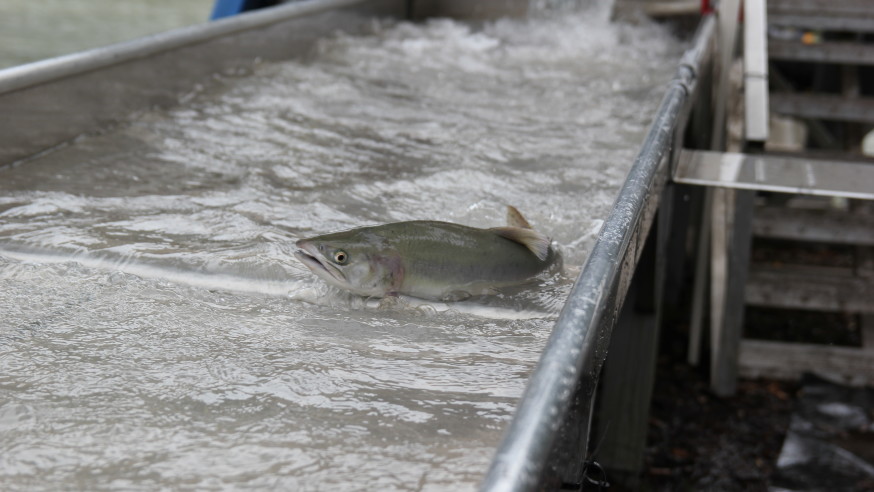Smaller than average coho and pink salmon are returning to local rivers, and the warm water blob off the coast could be to blame.
The runs are smaller in both number and weight. The average coho size in the recent catch of a Squaxin Island tribal fisherman was just 3.4 pounds, less than half of the 8-pound average weight of a coho.
Lorraine Loomis, NWIFC chair and Swinomish fisheries manager, observed the trend in smaller pink salmon in a recent fishery.
“Where they’re usually four and a half, five pounds, they’re about three, three and a half pounds now,” she said. “So they’re quite small.”
The winning coho at the Edmonds derby was a record small size.
Coho and pink salmon returning this year left for the ocean at the same time, in the spring of 2014, just as the Pacific Blob was forming.
Why would that matter?
Apparently, the Pacific Blob is full of food that salmon will eat, but won’t do them much good:
Dower and other researchers have been concerned what might be happening to the important food source as the water off the B.C. coast has warmed over the past year and a half.
“We were quite keen to get out here and see what was going on,” he said.
“One way to think about plankton is you’ve got your crunchies and you’ve got your squishies.”
The species that usually dominate in colder water tend to be “crunchies,” he said: krill and other shrimp-like animals that are high in nutritious fatty acids and oils.
“What we’re seeing is a lot of [squishies], gelatinous types of zooplankton, and they’re not nearly as nutritious as the normal species of plankton that we find off the coast here.”
Impacts from the blob have already been seen in sea life across the Pacific coast, including sardines and sea lions in California.

